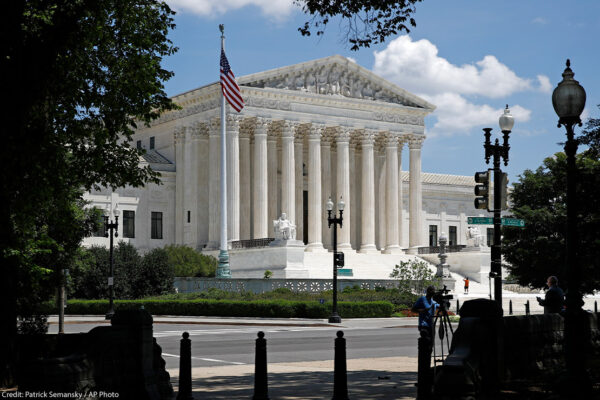Today, in an unprecedented decision, the Supreme Court ruled that the state of Montana must provide funding for religious education as part of its school voucher tax credit program — despite the fact that the Montana Constitution forbids government aid for religious education and activities. The court’s opinion in Espinoza v. Montana Department of Revenue marks an alarming sea change in the law and calls into question the continued validity of similar provisions in dozens of other state constitutions, which aim to prohibit government funding for religious institutions.
The Supreme Court has held that school vouchers for religious education are permissible under the First Amendment because, according to the court, the aid is indirect, meaning it is not provided directly to schools but instead funneled to individual students and families who then decide which schools to attend. However, the court has also recognized that state constitutions can, and often do, provide stronger protections than the federal Constitution against government funding of religion.
Today’s decision disregards that longstanding precedent and will be detrimental to both religious freedom and public education: The court’s ruling could effectively mean that, when states offer school vouchers or similar funding involving indirect aid — such as Montana’s tax credit scholarship program — they now must extend the aid to religious schools, too. This is despite the fact that millions more in government funds will be diverted from public schools as a result, and taxpayer dollars will be used to support religious indoctrination and training for future religious leaders and adherents. This also means that the government will fund discrimination against minority-faith and LGBTQ students and job applicants, as well as students and prospective employees with disabilities, whom many religious schools refuse to admit or hire. Indeed, earlier this year, the court heard arguments in two cases that could expand the ability of religious schools — the very same ones that often receive voucher funding — to discriminate in hiring and firing based on any ground the schools want, including race and ethnicity.
With today’s ruling and its 2017 decision in Trinity Lutheran v. Comer allowing — for the first time ever — direct funding of a church as part of a playground resurfacing program, the Supreme Court appears to be marching toward a legal paradigm that would virtually destroy a fundamental principle on which the Establishment Clause of the First Amendment was built. As James Madison, the architect of the First Amendment, explained, even “three pence” in compelled aid to religion was too much of a threat to religious liberty. Madison believed that forcing individuals to financially support religion was a direct assault on the fundamental human right of freedom of conscience. He and the other framers also worried that taxpayer funding of religion would weaken religious institutions by making them dependent on the government aid and engender religious divisiveness.
Dozens of states, including Montana, took Madison’s concerns seriously. They enacted constitutional provisions like Montana’s to protect their taxpayers’ consciences when it comes to matter of faith, preserve the vitality of their public school systems, respect religious institutions’ autonomy, and facilitate peaceful religious pluralism in their communities. But increasingly, the Supreme Court appears not to care about these values. Instead, religious freedom these days goes only one way — in favor of religious institutions and against the separation of church and state.

